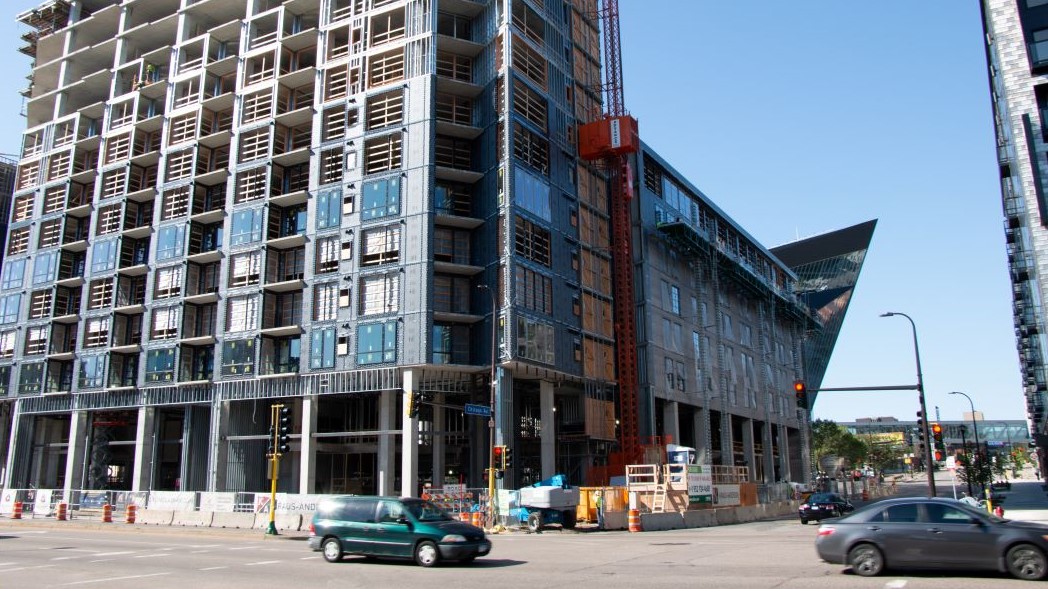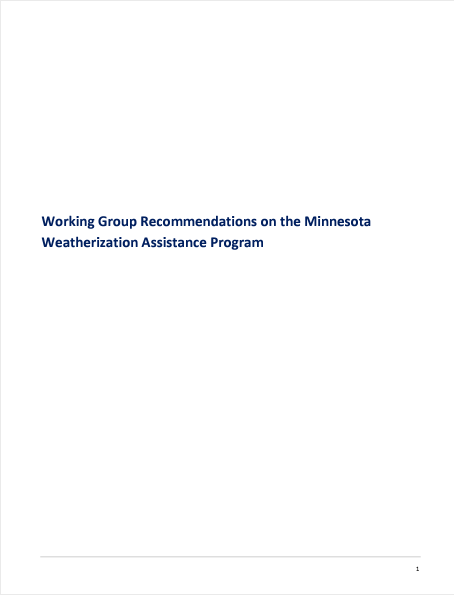
Ensuring equity in both process and outcomes is the bread and butter of Fresh Energy’s work to advance clean energy solutions that work for all Minnesotans. This work plays out in several key arenas, including ensuring access to truly affordable housing, healthy and equitable transportation, and spurring local government action through partnership with a diverse group of stakeholders. Part of the puzzle also includes a process called weatherization—the practice of protecting a building and its interior from the elements, particularly from precipitation, wind, and inclement weather, as well as modifying a building to reduce energy consumption and optimize energy efficiency.
Fresh Energy engages in efforts to increase weatherization across the state of Minnesota because weatherization is a key tool in decreasing energy burden—the percentage of gross household income spent on energy costs. In our state, energy burden is four times higher for under-resourced households than for the average Minnesota household. Under-resourced households on average experience an energy burden of eight percent, compared to a statewide average of two percent. Some households across the state experience even higher energy burdens, closer to 30 percent. For these families, that means 30 percent of their entire income is spent just on paying energy bills. And this does not even include other household expenses.
Weatherization efforts, which often occur via the Minnesota Department of Commerce’s Weatherization Assistance Program for income-eligible households, help households increase energy efficiency, reduce total energy expenditures, and improve health and safety. This is especially important for under-resourced households, particularly those belonging to older Minnesotans, people with disabilities, and children. What’s more, the process of weatherization is a conduit for deploying new, clean, electric technologies, facilitating industry-wide adoption in homes across the state from pockets of Greater Minnesota to the Twin Cities and is therefore a useful tool for creating a market for a thriving local economy.
Weatherization work

After successful advocacy from Fresh Energy and partners on ECO Act, which helped green light utility spending on pre-weatherization measures and related health and safety issues, Fresh Energy has kept up the drum beat for weatherization. ECO Act updated the Department of Commerce’s Conservation Improvement Program (CIP), which encompasses commercial and residential weatherization and is not income qualified. So, we’ve been thrilled to continue seeing weatherization included in the federal Bipartisan Infrastructure Law, up for debate at the Minnesota Legislature this session, and making the rounds on local and regional news.
Fresh Energy’s Mari Ojeda has been actively involved in advocating for weatherization measures in Minnesota. After speaking about it at the Midwest Energy Solutions Conference in February, Mari also testified on proposed legislation authored by Representative Robert Bierman that focuses on workforce development within weatherization—one of many weatherization bills being considered this legislative session. Mari has also represented Fresh Energy on the 2021-2022 Weatherization (Wx) Working Group, a cross-sector group of stakeholders from legislators to energy and environment advocates, utilities, service providers, and other partners who collaborated to assess current barriers to service and provide a set of recommendations to the Minnesota Legislature and other state leaders.
Mari served as a co-lead for the Working Group’s Equity Sub-Group alongside Jon Fabre from Otter Tail Power. Their sub-group’s recommendations focused on better and more equitably serving households across categories like race, housing type, geographic location, and more. For example, within the housing type category, the group discussed recommendations for the state related to multifamily buildings and renters. Within the geographic location category, the group paid special attention to potential solutions for addressing the high energy burden faced by several counties in Greater Minnesota.
Some highlighted recommendations from the Wx Working Group report are:
- Improve data. Improve upon existing data to monitor the program’s outcomes and identify additional opportunities for improvement. Metrics related to equity are especially important in ensuring proper access to the program’s services and in reducing disparities within program participation.
- Increase federal advocacy on expanding program eligibility. For example, use energy burden as possible criteria for program eligibility, or a geography-based approach, such as zip code. This casts a wider net to participants that may currently be ineligible to participate in the program.
- Improve program access to renters in multifamily buildings. It is currently harder to serve renters in multifamily buildings due to federal program constraints. For example, allow for an extended timeline for multifamily projects that may take longer than a year to complete, which is currently outside of the program’s one-year funding cycle. Another example could be to provide gap funding for affordable housing property owners who are required to contribute financially to participate in the program.
- Create more opportunities for workforce development and training. It is critical to invest in programs like the Weatherization Assistance Program and pre-weatherization efforts, alongside investing in training the people who are needed to do this type of work. The proposed legislation from Rep. Bierman discussed above would establish a Weatherization Apprenticeship Grant Program and help set up our workforce for success in creating more jobs and training opportunities within the energy efficiency sector.
Mari says about the program and the working group’s recommendations, “Increased investment for weatherization will go a long way toward decreasing Minnesotans’ energy burdens by saving them money on their energy bills. This is especially important for under-resourced households that can benefit the most from these efforts.” She notes that this is great timing to be proactive and identify these opportunities as Minnesota prepares to receive its portion of federal funding from the Bipartisan Infrastructure Law.
Fresh Energy will continue to advocate for Minnesotans’ health, safety, and energy affordability at the Legislature and beyond, and we’re excited to see even more progress on the horizon for weatherization efforts in Minnesota in the coming months. Fresh Energy will be collaborating with our partners to further the scope of weatherization and increase equitable participation, so stay tuned for updates on progress from us!

